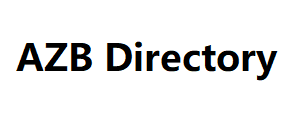In the digital age, communication remains a cornerstone of daily life, and phone numbers serve as vital links in this interconnected world. Understanding the intricacies of USA phone numbers can empower individuals and businesses alike to navigate communication effectively. From structure to regional variations and usage norms, here’s a comprehensive guide to USA phone numbers.
Structure of USA Phone Numbers
USA phone numbers follow a specific structure Saudi Arabia TG Number Data defined by the North American Numbering Plan (NANP). A standard USA phone number consists of ten digits grouped into three parts: the three-digit area code, followed by a three-digit central office code (or exchange code), and finally, a four-digit subscriber number.
For example, a typical USA phone number might appear as (123) 456-7890, where:
- Area Code (123): Indicates the geographic region or specific locality associated with the phone number.
- Central Office Code (456): Identifies the central office or exchange serving a particular area within the larger region.
- Subscriber Number (7890): The unique identifier for the individual subscriber or business line.
The format (XXX) YYY-ZZZZ helps in routing calls efficiently across the telephone network, ensuring seamless connectivity within and beyond state borders.

Regional Variations and Area Codes
USA phone numbers are geographically organizedEstonia Phone Number into area codes, each representing a specific region or metropolitan area. Originally designed to facilitate direct dialing within the NANP, area codes have evolved to accommodate population growth and technological advancements.
Some area codes, such as 212 (New York City) or 310 (Los Angeles), have become iconic, synonymous with their respective regions. Over time, new area codes have been introduced to meet the demand for additional phone lines and services, leading to overlays where multiple area codes cover the same geographic area.
Understanding area codes can provide insights into the origin or location of a phone number, making them useful for both personal and business communications.
Usage and Practical Considerations
In practical terms, USA phone numbers serve a variety of purposes beyond voice communication. They are integral to SMS messaging, mobile apps, and online verification processes. Understanding the nuances of phone number usage can enhance security measures and streamline digital interactions.
Moreover, USA phone numbers are essential for businesses engaging in customer service, sales, and marketing. Local area codes can establish a sense of trust and accessibility among consumers, while toll-free numbers (e.g., 1-800 numbers) enable nationwide reach without cost to the caller.
For individuals, maintaining privacy and security of phone numbers is increasingly important in the digital age. Techniques such as number portability and virtual phone numbers offer flexibility while safeguarding personal information.
Conclusion
In conclusion, USA phone numbers represent more than mere digits; they are conduits of connection in an ever-evolving communication landscape. From their structured format to regional significance and diverse applications, understanding USA phone numbers is crucial for effective communication and engagement.
Whether you’re navigating personal calls, establishing a business presence, or enhancing digital security, grasping the fundamentals of USA phone numbers empowers you to harness their full potential. Embrace the nuances of area codes, explore innovative communication solutions, and leverage the power of phone numbers to connect with confidence in today’s interconnected world.






